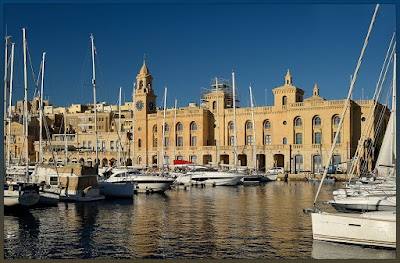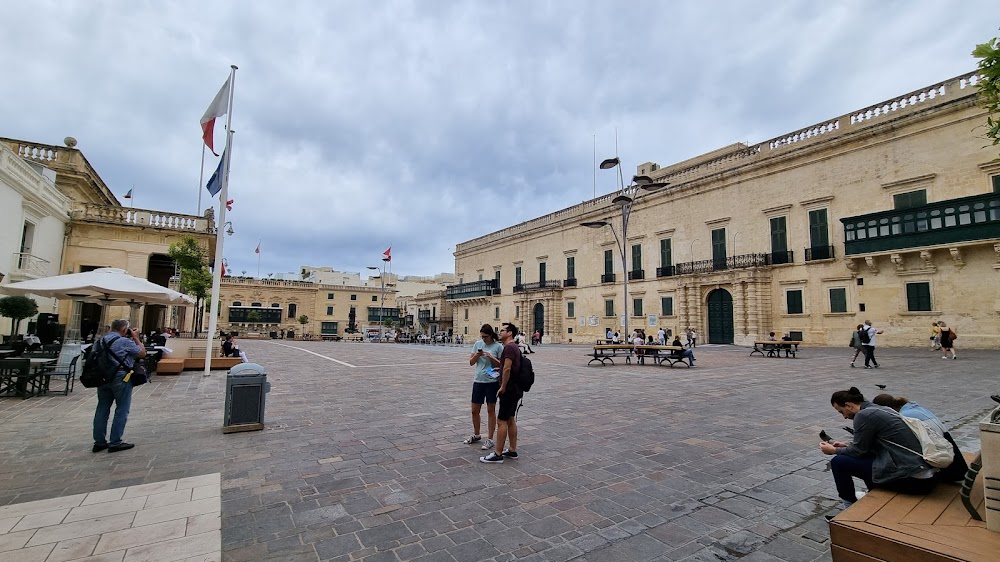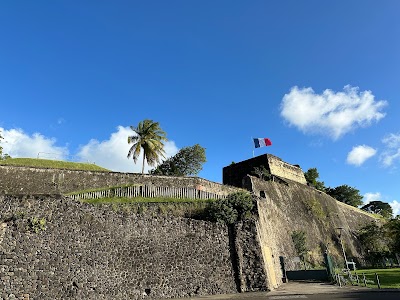Fort Saint Charles (Fort Saint Charles)
Overview
Introduction to Fort Saint Charles
Fort Saint Charles, locally known as Fort Saint Elmo, is a remarkable fortress nestled in the heart of Valletta, Malta. This iconic bastion not only showcases the island's rich military history but also emphasizes its strategic significance within the Mediterranean. Situated at the tip of the Sciberras Peninsula, the fort provides breathtaking views of the Grand Harbour, making it a must-visit destination for any traveler interested in Malta's past.
Historical Significance
Originally constructed by the Knights of Saint John in 1552, Fort Saint Charles played a pivotal role during the Great Siege of Malta in 1565. The fort's strategic location was essential in defending the island against the formidable Ottoman Empire. The bravery exhibited by the knights and the local population turned the tide of this epic conflict, a story richly documented within the fort's walls. Visitors can delve into exhibitions featuring artifacts, weaponry, and detailed accounts of the siege, immersing themselves in a defining moment of Maltese history.
Evolution of the Fortress
Throughout the centuries, Fort Saint Charles has seen numerous transformations to keep pace with advancements in military technology. In the late 17th century, the fortress was fortified with additional bastions and redesigned into a star-shaped layout, enhancing its status as one of the most formidable defenses of its time. The British further upgraded the fort during their rule in the 19th and early 20th centuries for use in both World Wars. This layered history offers an intriguing narrative that will captivate history enthusiasts.
World War II Legacy
One of the fort's most notable chapters unfolded during World War II. Malta's strategic location made it a primary target for Axis bombing campaigns, and Fort Saint Charles stood as a bastion of resilience. Its robust defenses played a crucial role in the British efforts to maintain control over the Mediterranean. The fort's endurance during this tumultuous period symbolizes the resilience of the Maltese people, who weathered relentless bombardments while contributing significantly to the Allied war effort.
National War Museum and Exhibits
For those fascinated by history, the National War Museum located within the fort is an essential stop. The museum houses an impressive array of military artifacts from various eras, including the renowned George Cross awarded to Malta for its bravery in World War II. Interactive exhibits and multimedia presentations bring Malta's military history to life, making it accessible and engaging for visitors of all ages.
Architectural Marvel
The architecture of Fort Saint Charles is striking, with its honey-colored limestone walls reflecting traditional Maltese building styles. The intricate design of the fortifications showcases advanced military engineering from its era. As you wander through the fort, you'll encounter original cannons and bastions that once fortified Valletta’s defenses. The dungeons and underground passages add an element of mystery, inviting exploration and sparking the imagination.
Stunning Views
From the ramparts of Fort Saint Charles, visitors can enjoy spectacular views of the surrounding harbor and the city of Valletta. The stunning Barrakka Gardens, the Three Cities across the water, and the bustling maritime activities of the Grand Harbour create a picturesque backdrop, offering perfect photo opportunities and a deeper appreciation for the fort's strategic importance.
Cultural Events and Activities
Fort Saint Charles is not just a historical site; it also hosts a variety of cultural events, including reenactments, military parades, and historical fairs that bring the past to life. During these events, actors in period costumes recreate significant battles and daily life within the fort, providing a dynamic and immersive experience. Educational programs and workshops are also available, making it a fantastic destination for families and school groups.
Exploring Valletta
Its prime location makes Fort Saint Charles an ideal starting point for exploring Valletta, a UNESCO World Heritage site teeming with historical landmarks, museums, and cultural sites—all within walking distance. After your visit, consider exploring nearby attractions like Saint John's Co-Cathedral, the Manoel Theatre, and the vibrant streets of Valletta.
Conclusion
In summary, Fort Saint Charles is more than just a stone monument; it is a living testament to Malta's resilience and strategic importance throughout history. The fort offers a multifaceted experience that combines historical education, architectural beauty, and breathtaking views. Whether you are a history buff, an architecture lover, or simply seeking a unique and enriching experience, a visit to Fort Saint Charles promises to be an unforgettable journey through time.






